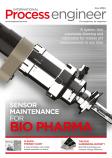Temporary horizontal timelines are a safety staple, but new materials improve durability and set-up speed.
Construction and maintenance work is notoriously dangerous. In fact, 2020-21 statistics from the UK Health and Safety Executive (HSE) show that they account for more fatal workplace injuries than any other sector (24% of the total), with manufacturing the second most dangerous at 18%. The most prominent accident category (24% of all work deaths) was a fall from a height.
Temporary horizontal lifelines, anchorage lines that run adjacent to a falling edge, can help prevent death and serious injury from falling at work and are increasingly used in construction and industrial maintenance sectors.
The lifeline is rigged to ensure that a falling user will always remain adjacent to the fall and not subjected to the pendulum (swing) effect.
Requirements
Temporary horizontal lifelines must abide by several key safety standards including a 2:1 safety factor (meaning equipment must be designed to hold at least twice the amount it will realistically hold). They must also come equipped with end anchorages capable of sustaining a force of 5,000lbs (22.2kN) without deformation in directions permitted by the system. This applies to use with both one and two users.
In industrial environments, the equipment tends to be used in locations where work at height is needed only occasionally such as one-off machinery repair or a servicing task required just once every few years.
By their nature, construction projects alter in shape and height as they develop. To meet these changing needs, temporary horizontal lifelines can be continually moved into different positions.
Expanded lifeline choice
A temporary horizontal lifeline provides the anchorage for a fall protection system whose other essential components are a body harness and a connecting device. The latter, which is often an SRL (self-retracting lifeline) or a PFL (personal fall limiter), connects the worker’s harness to the horizontal lifeline.
Durability with these products is essential and equipment manufacturer MSA has released a new product made from galvanised steel cable, rather than rope or webbing, to maximise durability. The product has also tackled another common issue with temporary horizontal lifelines - lengthy set up times.
Lightweight system enables easy set-up
The equipment uses flexible, lightweight cable that can be easily carried and set up by one person. This will replace complex, time-consuming set-up processes – typically requiring several personnel – with a simpler approach. The MSA lifeline also has user-friendly charts to quickly determine the required clearances. It is also designed to allow two connected workers to pass each other on the line without temporarily disconnecting.
Simple attachment
A temporary horizontal lifeline must be connected to a firm anchor point at each end. The anchor points are normally beams or other solid structural features of a building. Attachment is usually via anchor straps. Once attached, the lifeline needs to be locked and tightened. These are often slow procedures requiring nuts and bolts. However, the MSA solution has toolless locking and tensioning mechanisms built into the lifeline. There are no tools or other separate items to carry and potentially drop or lose. In addition, both mechanisms are at the same end of the lifeline, meaning there is no longer a need to walk back and forth when installing it. The company claims that the product reduces set up time by almost two thirds compared with traditional cable systems.
The MSA system is flexible and adaptable to different circumstances make it ideal for constantly changing work sites and intermittent maintenance tasks.
Durability, strength and value
Web-based and rope-based systems are of course lighter, but the strength and durability of MSA’s galvanised steel cable gives workers and their managers greater assurance in a potentially hazardous situation.


















